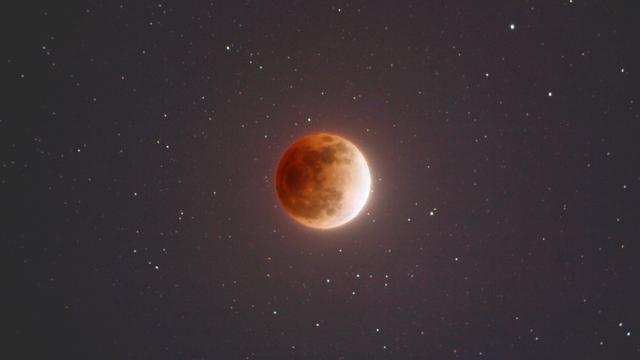Tomorrow night we are in for a real treat. Look up to the sky and you’ll see a Blue Moon, which is also a Blood Moon, which is also a Supermoon, which is also an eclipse.
But what does all this actually mean, and what’s the best way to see it? We spoke to Astronomer Kirsten Banks to find out more.
What is a Blue Moon?
First things first – “Blue Moon” isn’t really a scientific term, Banks says. It comes from astrology, and is essentially the second full moon that occurs in a calendar month.
“A full moon occurs every 29.5 days – and since there are 31 days in January, and we already had a full moon on January 2, we get a second ‘blue moon’ at the end of the month!”
What is a Blood Moon?
As cool as it sounds, it turns out a “Blood Moon” is just a fancy term for a Lunar Eclipse. Which is also cool, obviously – but it doesn’t have the same ring to it, you know? But – why is it red?
“The redness comes from light that is scattered through the Earth’s atmosphere,” Banks explains. “This scattering, called Rayleigh Scattering, is what makes our sky blue. The particles in our atmosphere are of a certain size and shape to scatter blue light more effectively.”
And since the light from the Sun has to pass through a lot of atmosphere to get to the Moon – only red light is left, giving it a blood red colour in most cases.
“If we had no atmosphere, the Moon would just appear black.”
What is a Supermoon?
The term “Supermoon” is old mate Astrology being tricky with terms again. As Banks explains, it is actually a full moon (or a new moon) that occurs close to its closest approach to Earth – known to Astronomers as “the perigee”.
When is the best time to see the Super Blue Blood Moon?
This is a lunar eclipse, where the moon will slide in the Earth’s shadow – so it’s totally safe to watch. You’ll want to be watching the sky on Wednesday night – that’s January 31.
- Darwin: Totality begins 10.21pm, ends 11.38pm
- Brisbane: Totality begins 10.51pm, ends 12.08am
- Adelaide: Totality begins 11.21pm, ends 12.38am
- Sydney, Melbourne and Hobart: Totality begins 11.51pm, ends 1.08am
- Perth: Totality begins 8.51pm, ends 10.08pm
The best time to see the total lunar eclipse is the time of totality, Banks explains, “When the Moon will actually become red.”
“The Moon will start luring into the Earth’s shadow from 10pm AEDST, and will be out by 3am AEDST.”
If the weather doesn’t play nice, you can always with the NASA Livestream instead.
According to NASA, a Super Blue Blood Moon hasn’t occurred for 150 years in some parts of the world. The last time Australia saw one was in December 1983. So it’s pretty exciting.
“A blue blood moon is so exciting, in my opinion, because it’s a great excuse for people to stop what they’re doing and look up at the wonderful night sky,” Banks says. “While Australia’s night skies are phenomenal on their own, events like this bring people together to look up and enjoy the cosmos.”
Of course, if you miss out for some reason (fingers crossed the clouds stay away) Banks points out that these events, individually, occur far more frequently.
“We will actually have a second ‘blue moon’ this year in March, there will be another lunar eclipse occurring for parts of Africa and Asia in July, and the previous two full moons have been super moons!” Banks explains.
